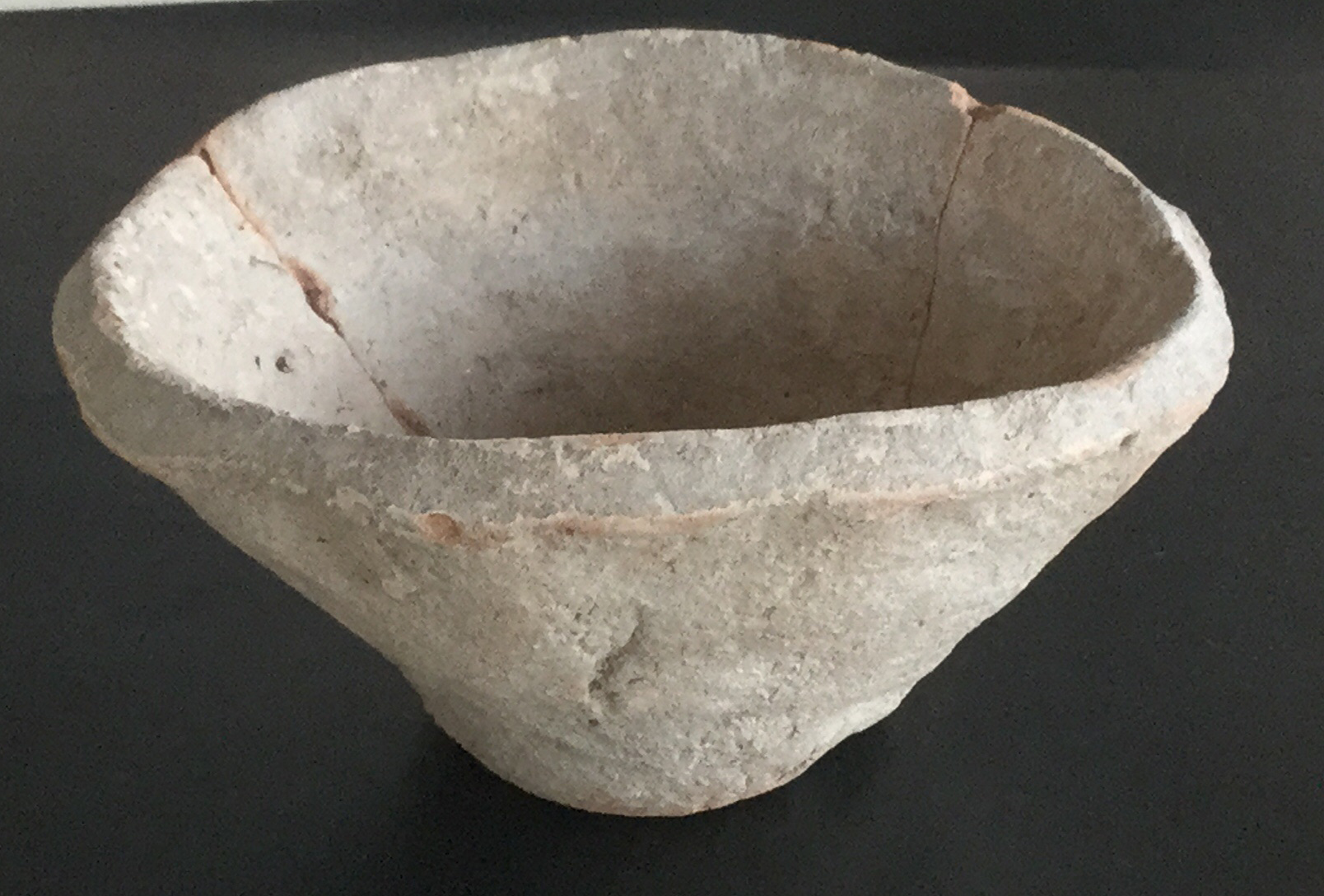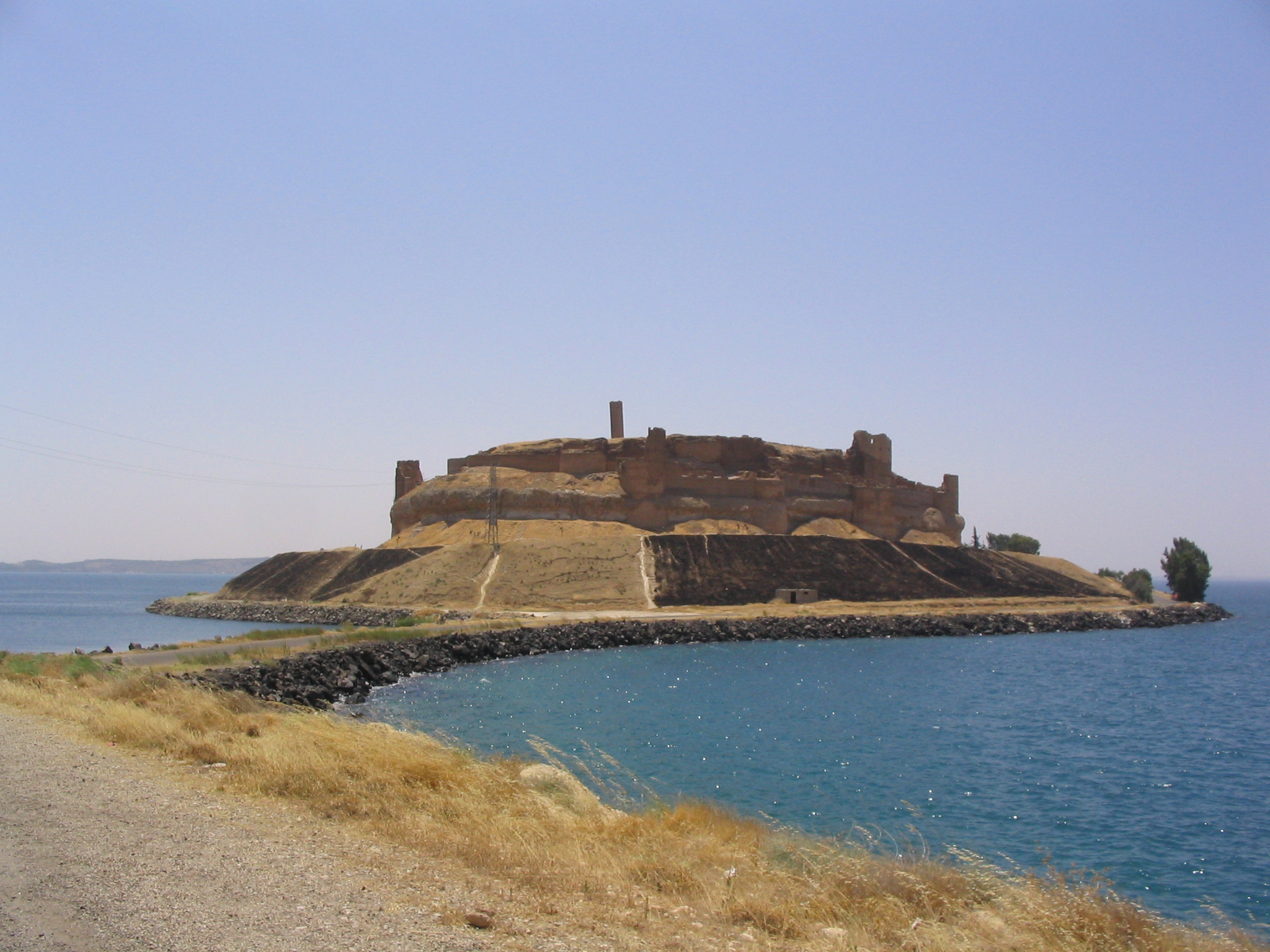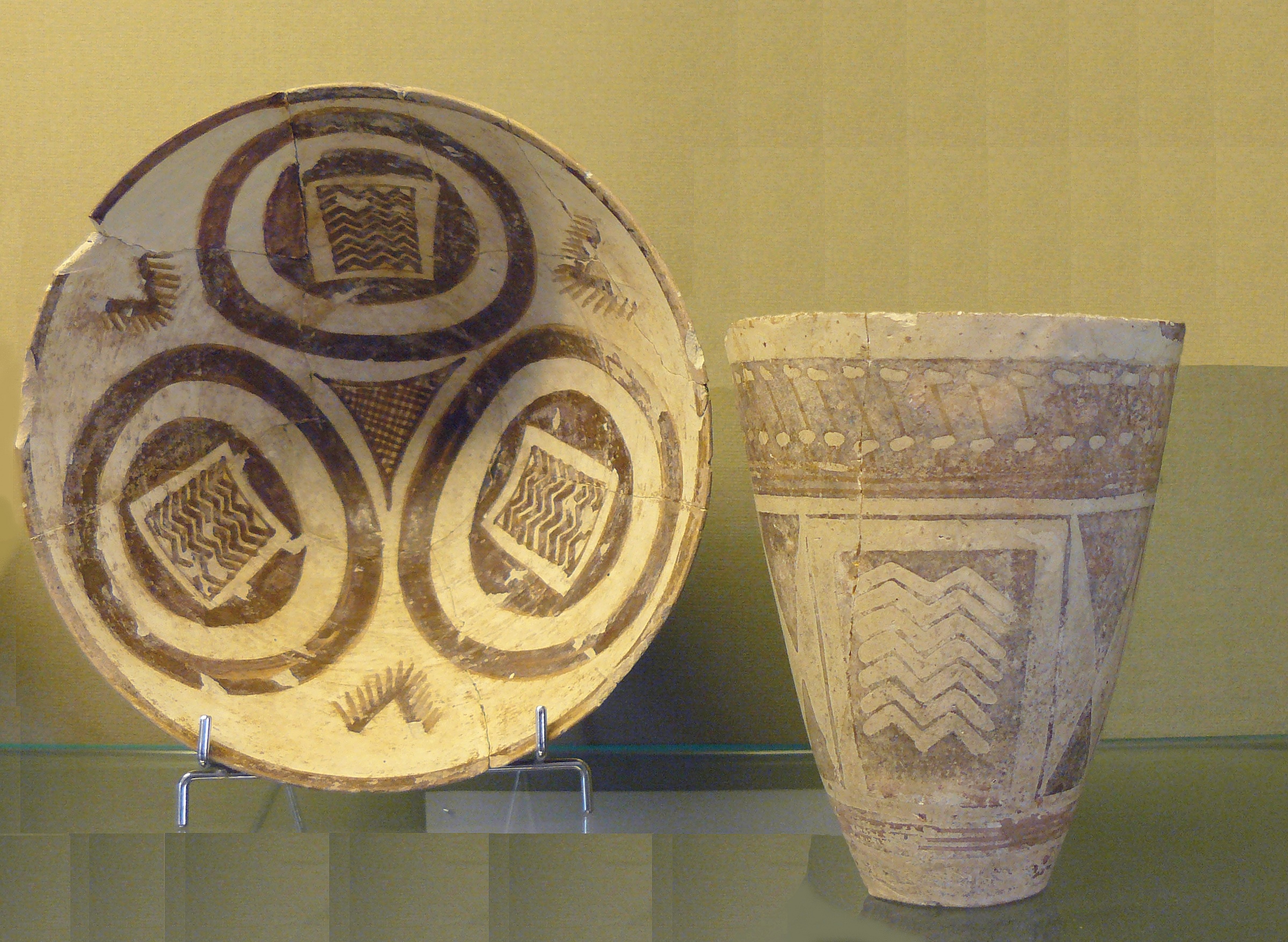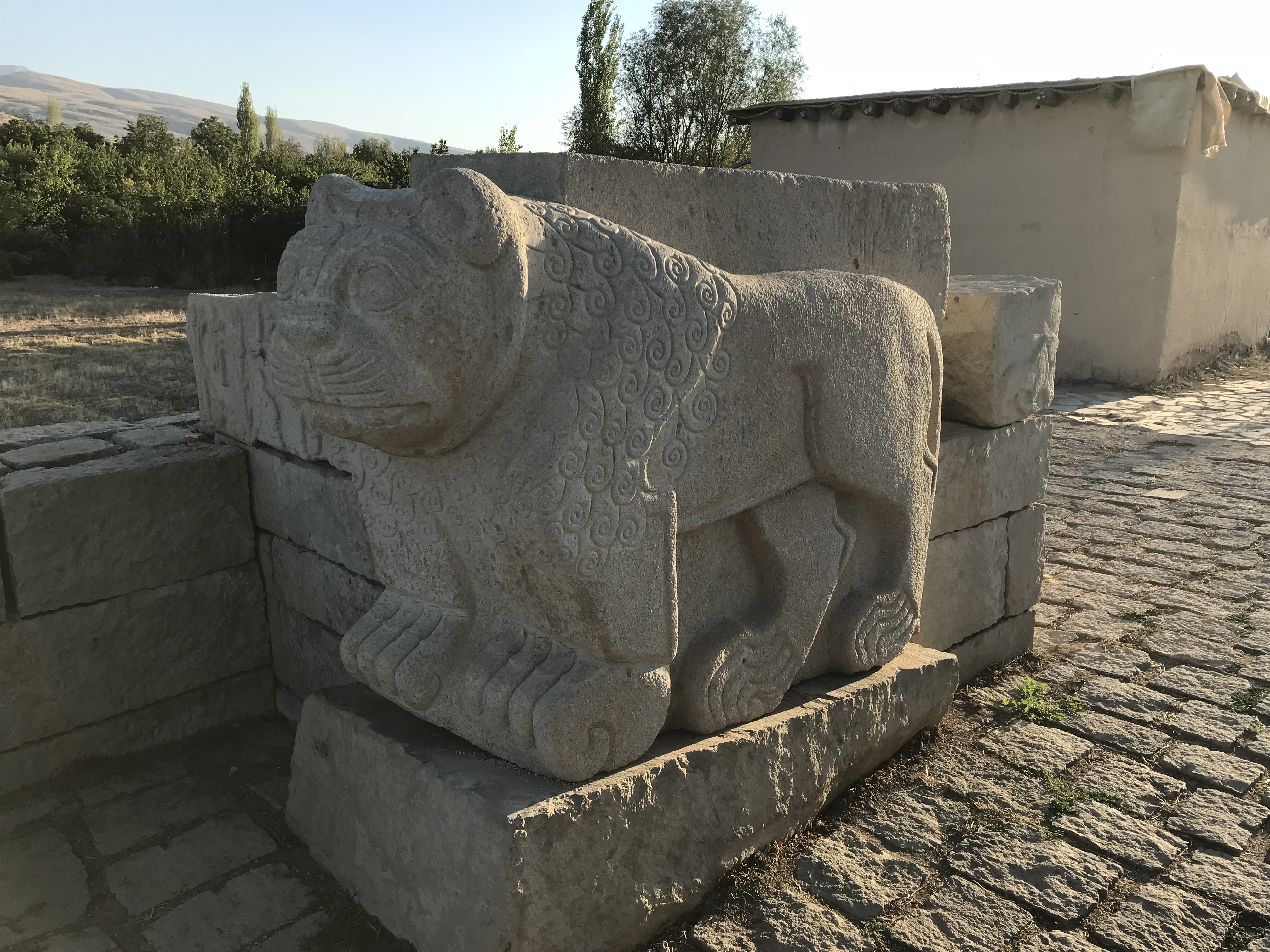|
Habuba Kabira
Habuba Kabira (also Hubaba Kabire) at Tell Qanas is the site of an Uruk settlement along the Euphrates in Syria, founded during the later part of the Uruk period. It was about 800 mi (1,300 km) from the city of Uruk. The site is now mostly underwater due to the Tabqa Dam project. It consists of Habuba Kabira South, which is protoliterate, and Habuba Kabira North, which is protoliterate, Middle Bronze Age, Late Bronze Age, and Roman. History Habuba Kabira was built around 3500 BCE on a regular plain with strong defensive walls, but was abandoned after a few generations and never inhabited again. The site is around 18 hectares in area, with the walled area encompassing 10 hectares. Lisa Cooper cites evidence from Heinrich, et al. 1969 as well as Heusch, 1980 indicating that the site was reinhabited from late Early Bronze Age to Middle Bronze Age with reuse of building walls and the defensive walls. There were also several other late Uruk enclaves and outposts in this general area ... [...More Info...] [...Related Items...] OR: [Wikipedia] [Google] [Baidu] |
Tabqa Dam
The Tabqa Dam ( ar, سَدُّ الطَّبْقَةِ, Sadd aṭ-Ṭabqah, ku, Bendava Tebqa; syc, ܣܟܪܐ ܕܛܒܩܗ, Sekro d'Tabqa), or al-Thawra Dam as it is also named ( ar, سَدُّ الثَّوْرَةِ, Sadd aṯ-Ṯawrah, ku, Bendava Tewra; syc, ܣܟܪܐ ܕܬܘܪܗ, Sekro d'Ṯawra, literally "Dam of the Revolution"), most commonly known as Euphrates Dam ( ar, سَدُّ الْفُرَاتِ, Sadd al-Furāt; ku, Bendava Firatê; syc, ܣܟܪܐ ܕܦܪܬ, Sekro d'Frot), is an earthen dam on the Euphrates, located upstream from the city of Raqqa in Raqqa Governorate, Syria. The city of Al-Thawrah is located immediately south of the dam. The dam is high and long and is the largest dam in Syria. Its construction led to the creation of Lake Assad, Syria's largest water reservoir. The dam was constructed between 1968 and 1973 with help from the Soviet Union. At the same time, an international effort was made to excavate and document as many archaeological remains as pos ... [...More Info...] [...Related Items...] OR: [Wikipedia] [Google] [Baidu] |
Tell Es-Sweyhat
Tell es-Sweyhat is the name of a large archaeological site on the Euphrates River in northern Syria. It is located in Raqqa Governorate roughly 95 km northeast of Aleppo and 60 km south of Carchemish. Also, a Uruk site of Jebel Aruda and a Bronze Age site Tell Hadidi (Azu) are located just across the river. History Sweyhat dates from 3100–1900 BC, or the Early Bronze Age and the very beginning of the Middle Bronze Age. The site covers approximately 45 hectares and consists of a central, high mound standing 15 meters above the surrounding plain and an extensive low mound surrounded by the remains of an earthen rampart. The site is located within Mesopotamia in a very marginal environment for agriculture, yet in antiquity it was a prosperous city. The site was also occupied during the Hellenistic Period. Archaeology Sweyhat is best known for its intact fortifications of the mid-to-late 3rd millennium BC and its late-3rd-millennium temple located at the summit of t ... [...More Info...] [...Related Items...] OR: [Wikipedia] [Google] [Baidu] |
Archaeological Sites In Aleppo Governorate
Archaeology or archeology is the scientific study of human activity through the recovery and analysis of material culture. The archaeological record consists of artifacts, architecture, biofacts or ecofacts, sites, and cultural landscapes. Archaeology can be considered both a social science and a branch of the humanities. It is usually considered an independent academic discipline, but may also be classified as part of anthropology (in North America – the four-field approach), history or geography. Archaeologists study human prehistory and history, from the development of the first stone tools at Lomekwi in East Africa 3.3 million years ago up until recent decades. Archaeology is distinct from palaeontology, which is the study of fossil remains. Archaeology is particularly important for learning about prehistoric societies, for which, by definition, there are no written records. Prehistory includes over 99% of the human past, from the Paleolithic until the advent of ... [...More Info...] [...Related Items...] OR: [Wikipedia] [Google] [Baidu] |
1969 Archaeological Discoveries
This year is notable for Apollo 11's first landing on the moon. Events January * January 4 – The Government of Spain hands over Ifni to Morocco. * January 5 **Ariana Afghan Airlines Flight 701 crashes into a house on its approach to London's Gatwick Airport, killing 50 of the 62 people on board and two of the home's occupants. * January 14 – An explosion aboard the aircraft carrier USS ''Enterprise'' near Hawaii kills 27 and injures 314. * January 19 – End of the siege of the University of Tokyo, marking the beginning of the end for the 1968–69 Japanese university protests. * January 20 – Richard Nixon is sworn in as the 37th President of the United States. * January 22 – An assassination attempt is carried out on Soviet leader Leonid Brezhnev by deserter Viktor Ilyin. One person is killed, several are injured. Brezhnev escaped unharmed. * January 27 ** Fourteen men, 9 of them Jews, are executed in Baghdad for spying for Israel. ** Revere ... [...More Info...] [...Related Items...] OR: [Wikipedia] [Google] [Baidu] |
Populated Places Established In The 4th Millennium BC
Population typically refers to the number of people in a single area, whether it be a city or town, region, country, continent, or the world. Governments typically quantify the size of the resident population within their jurisdiction using a census, a process of collecting, analysing, compiling, and publishing data regarding a population. Perspectives of various disciplines Social sciences In sociology and population geography, population refers to a group of human beings with some predefined criterion in common, such as location, race, ethnicity, nationality, or religion. Demography is a social science which entails the statistical study of populations. Ecology In ecology, a population is a group of organisms of the same species who inhabit the same particular geographical area and are capable of interbreeding. The area of a sexual population is the area where inter-breeding is possible between any pair within the area and more probable than cross-breeding with ind ... [...More Info...] [...Related Items...] OR: [Wikipedia] [Google] [Baidu] |
Jawa, Jordan
Jawa is the site of the oldest proto-urban development in Jordan, dating from the late 4th millennium BC (Early Bronze Age). It is located in one of the driest areas of the Black Desert (Harrat al-Shamah) of Eastern Jordan. Remains of dams have been found, the largest of which is a masonry gravity dam and the oldest known dam in the world. It was used as a protection from flash floods. Discovery and history of investigation Jawa was first reported by French explorer Antoine Poidebard, who flew over and photographed the site in 1931, mistaking it for Roman ruins. Before and after Poidebard's discovery, several archaeological expeditions came close to but missed the site. Nelson Glueck visited it in 1947 but apparently failed to notice its significance, describing Jawa as a "small, filthy spring ..probably never more than a small police post." Finally, in 1950, an expedition led by epigrapher F. V. Winnett reached the site and documented some of the inscriptions there. Amongs ... [...More Info...] [...Related Items...] OR: [Wikipedia] [Google] [Baidu] |
History Of Mesopotamia
The history of Mesopotamia ranges from the earliest human occupation in the Paleolithic period up to Late antiquity. This history is pieced together from evidence retrieved from archaeological excavations and, after the introduction of writing in the late 4th millennium BC, an increasing amount of historical sources. While in the Paleolithic and early Neolithic periods only parts of Upper Mesopotamia were occupied, the southern alluvium was settled during the late Neolithic period. Mesopotamia has been home to many of the oldest major civilizations, entering history from the Early Bronze Age, for which reason it is often called a cradle of civilization. Short outline of Mesopotamia Mesopotamia ( grc, Μεσοποταμία ''Mesopotamíā; syc, ܐܪܡ ܢܗܪ̈ܝܢ, or , )'' means "Between the Rivers". The oldest known occurrence of the name Mesopotamia dates to the 4th century BC, when it was used to designate the area between the Euphrates and the Tigris rivers. The name Mes ... [...More Info...] [...Related Items...] OR: [Wikipedia] [Google] [Baidu] |
Cities Of The Ancient Near East
The earliest cities in history were in the ancient Near East, an area covering roughly that of the modern Middle East: its history began in the 4th millennium BC and ended, depending on the interpretation of the term, either with the conquest by the Achaemenid Empire in the 6th century BC or with that by Alexander the Great in the 4th century BC. The largest cities of the Bronze Age Near East housed several tens of thousands of people. Memphis in the Early Bronze Age, with some 30,000 inhabitants, was the largest city of the time by far. Ebla is estimated to have had a population of 40,000 inhabitants in the Intermediate Bronze age. Ur in the Middle Bronze Age is estimated to have had some 65,000 inhabitants; Babylon in the Late Bronze Age similarly had a population of some 50,000–60,000. Niniveh had some 20,000–30,000, reaching 100,000 only in the Iron Age (around 700 BC). In Akkadian and Hittite orthography, URU became a determinative sign denoting a city, or combi ... [...More Info...] [...Related Items...] OR: [Wikipedia] [Google] [Baidu] |
Deutsche Orient-Gesellschaft
The Deutsche Orient-Gesellschaft (, ''German Oriental Society''), abbreviated DOG, is a German voluntary association based in Berlin dedicated to the study of the Near East. The DOG was officially founded in January 1898 to foster public interest in oriental antiquities, and to promote related archaeological research. It competed with similar bodies in France and England, and reflected an increased enthusiasm to learn about the Bible lands in the late 19th century. DOG focused on the cultures of the Middle East from early times to the Islamic period. The founders of the DOG included a number of powerful, well-connected and wealthy members of German society, including Henri James Simon and banker Franz von Mendelssohn. Their wealth enabled the DOG to undertake expensive excavations in the Middle East. Kaiser Wilhelm II developed an interest in archaeology, and took the DOG under his protection from 1901, funding excavations with grants from Imperial funds. It was officially a ... [...More Info...] [...Related Items...] OR: [Wikipedia] [Google] [Baidu] |
Godin Tepe
Godin Tepe is an archaeological site in western Iran, located in the valley of Kangavar in Kermanshah Province. Discovered in 1961, the site was excavated from 1965 to 1973 by a Canadian expedition headed by T. Cuyler Young Jr. and sponsored by the Royal Ontario Museum (Toronto, Ontario, Canada). The importance of the site may have been due to its role as a trading outpost in the early Mesopotamian trade networks. Archaeology The earliest evidence for occupation at Godin comes from Periods XI through VII, spanning the Early and Middle Chalcolithic. The site was already inhabited as early as c. 5200 BC. Seh Gabi Because Godin has such a deep stratigraphy, it was decided that a related site of Seh Gabi nearby should also be studied. Seh Gabi is located 6 km northeast of Godin Tepe in the Kangavar valley. The deeper levels were easier to reach there. Originally, the excavations at Godin concentrated on levels II (ended c. 500 BC?) to V (c. 3200 BC-3000 BC), but the transiti ... [...More Info...] [...Related Items...] OR: [Wikipedia] [Google] [Baidu] |
Elazığ Province
Elazığ Province ( tr, ; Zazaki: Suke Xarpêt; ku, Parêzgeha Xarpêtê) is a province of Turkey with its seat in the city of Elazığ. The province had a population of 568,753 in 2014. The population of the province was 569,616 in 2000 and 498,225 in 1990. The total area of the province is , of which is covered by reservoirs and natural lakes. The province is considered part of Turkish Kurdistan. History In 1927 the office of the Inspector General was created, which governed with martial law. The province was included in the first Inspectorate General (''Umumi Müfettişlik,'' UM) over which the Inspector General ruled. The UM span over the provinces of Hakkâri, Siirt, Van, Mardin, Bitlis, Şanlıurfa, Elazığ and Diyarbakır. In December 1935, the Tunceli Law was passed, which demanded a more powerful Government in the region. In January 1936 the Elazığ Province was transferred under the authority of the newly established Fourth Inspectorate General, which span ov ... [...More Info...] [...Related Items...] OR: [Wikipedia] [Google] [Baidu] |
Arslantepe
Melid, also known as Arslantepe, was an ancient city on the Tohma River, a tributary of the upper Euphrates rising in the Taurus Mountains. It has been identified with the modern archaeological site of Arslantepe near Malatya, Turkey. It was named a UNESCO World Heritage Site under the name Arslantepe Mound on 26 July 2021. History Late Chalcolithic The earliest habitation at the site dates back to the Chalcolithic period. Arslantepe (VII) became important in this region in the Late Chalcolithic. A monumental area with a huge mudbrick building stood on top of a mound. This large building had wall decorations; its function is uncertain. Degirmentepe Değirmentepe, a site located 24 km northeast of Melid, is notable as the location of the earliest secure evidence of copper smelting. The site was built on a small natural outcrop in the flood plain about 40m from the Euphrates River. Early Bronze By the late Uruk period development had grown to include a large temple/pala ... [...More Info...] [...Related Items...] OR: [Wikipedia] [Google] [Baidu] |


.jpg)
.jpg)

.jpg)


